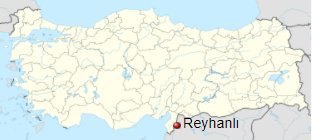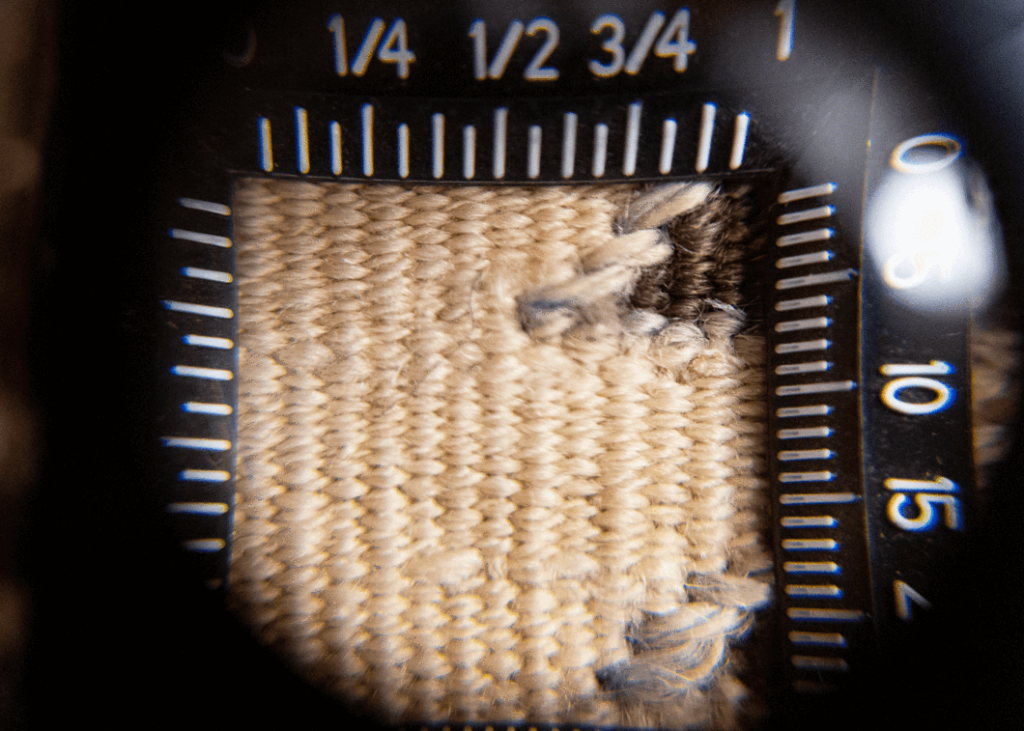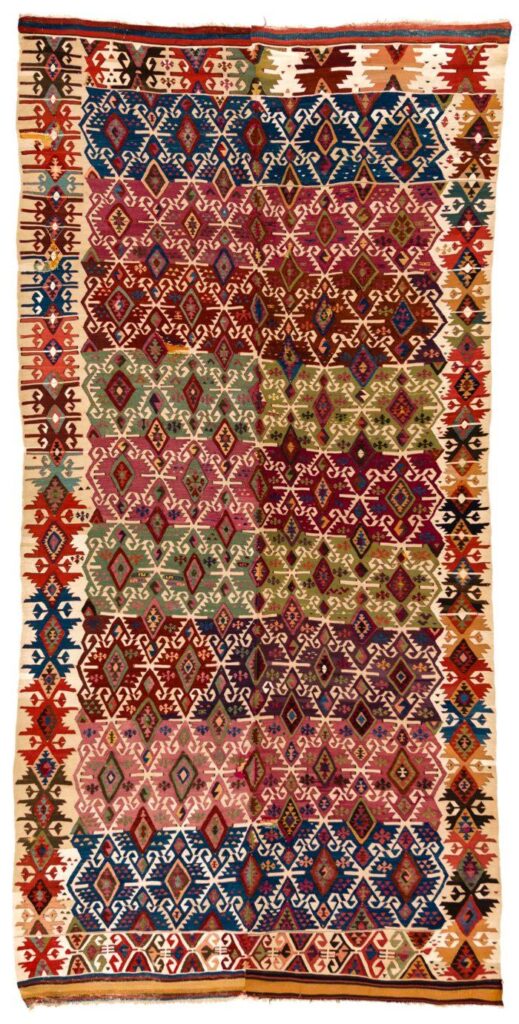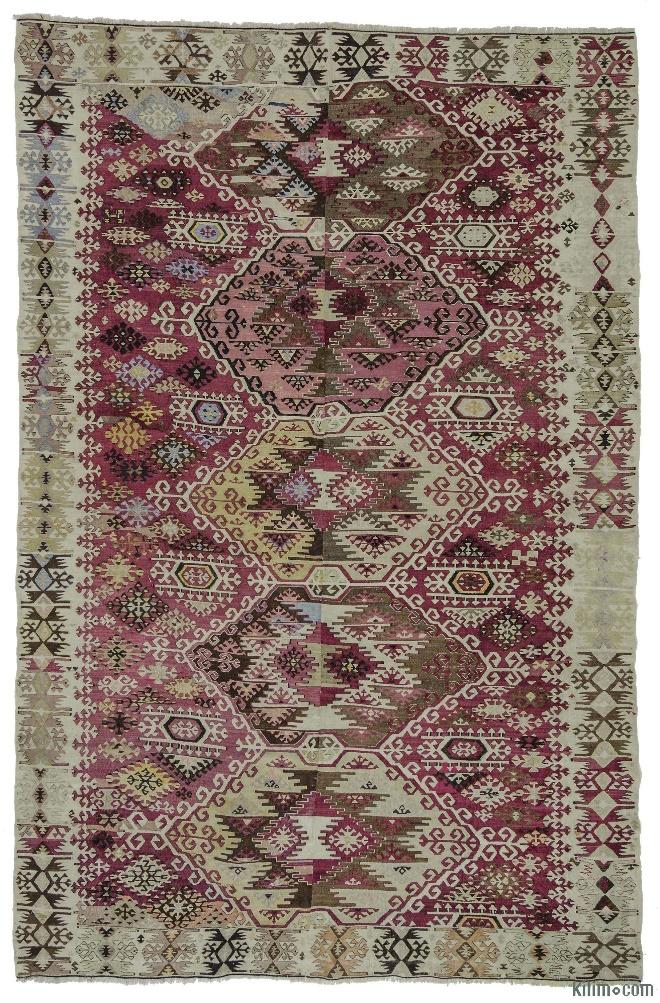Reyhanli Kilims

Reyhanli is a town and district of Hatay Province, on the Mediterranean coast of Turkey, near the country’s border with Syria.
Hatay Province is Turkey’s southernmost province. Almost all of it is located outside Anatolia, on the eastern coast of the Levantine Sea. The administrative capital of the province is Antakya. Reyhanli is a small town in the province with a big name in kilim weaving.
Antique Reyhanli Kilims date from the middle of the 19th century. Early examples are long, very finely woven and with unique designs distinguishable from other Anatolian kilims.
Anatolian kilim patterns and motifs find a delicate rendering in Reyhanli. To achieve such delicacy silk and metallic threads are also used. Luxurious raw material may include even feather and human hair in some antique pieces.
Technical aspects and the structure of Reyhanli kilims

Reyhanli kilims are considered enjoy a very fine weave, maybe the finest in Anatolia.
Reyhanli kilims are mostly long and narrow. These are woven in two pieces. Double pieces kilims are common in Anatolia. These piece are usually sewed to each other to make the bigger piece.

Wool is the main raw material in Reyhanli. Supplementary wefts may be cotton. Silk and metallic threads are also used. Even feather and human hair may be used in some antique pieces.
Dyeing and painting of Reyhanli kilims

Reyhanlis are painted joyfully with saturated colors. Madder and crimson are the shades of red dominant in Reyhanli kilims. These may be used in combination with dark blue, beige, cream or white.
Secondary palette may include light and dark blues, turquoise, yellow, cream, orange, mustard, apricot, scarlet, pink, salmon, and shades of green from grassy to olive. Warps are of white wool. Supplementary wefts may be cotton in white areas.

Designs and patterns of the Reyhanli kilims
The fine weave of the area leads to such an elaboration in designs which not expected normally of flat-weaves. Two basic designs attributed to Reyhanli. Pole medallions and striped structure.
The former consist of 3 or more lozenge-shaped medallions arranged vertically with a joining bar serving like a symmetry line for them.
Striped or paneled ones are made with short horizontal strips in a long narrow piece, strips are colored oppositely. Fine woven motifs are set inside strips like well-cut diamonds, rubies and sapphires.
Some repeating patterns make ultimately a lattice. A combination of the two styles also exists. In such designs each strip is designed with pole medallions.




